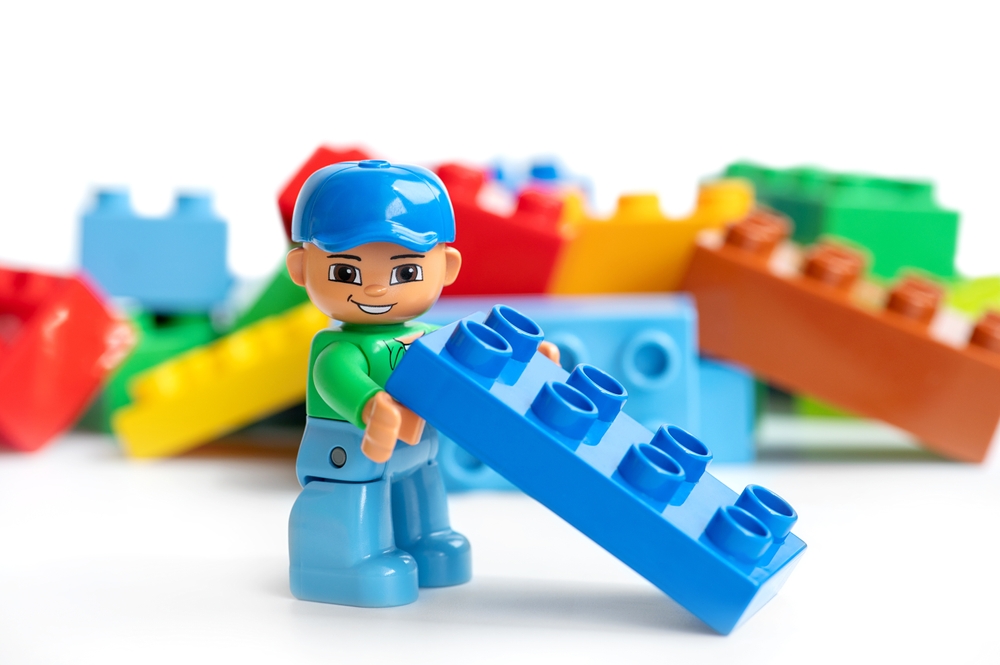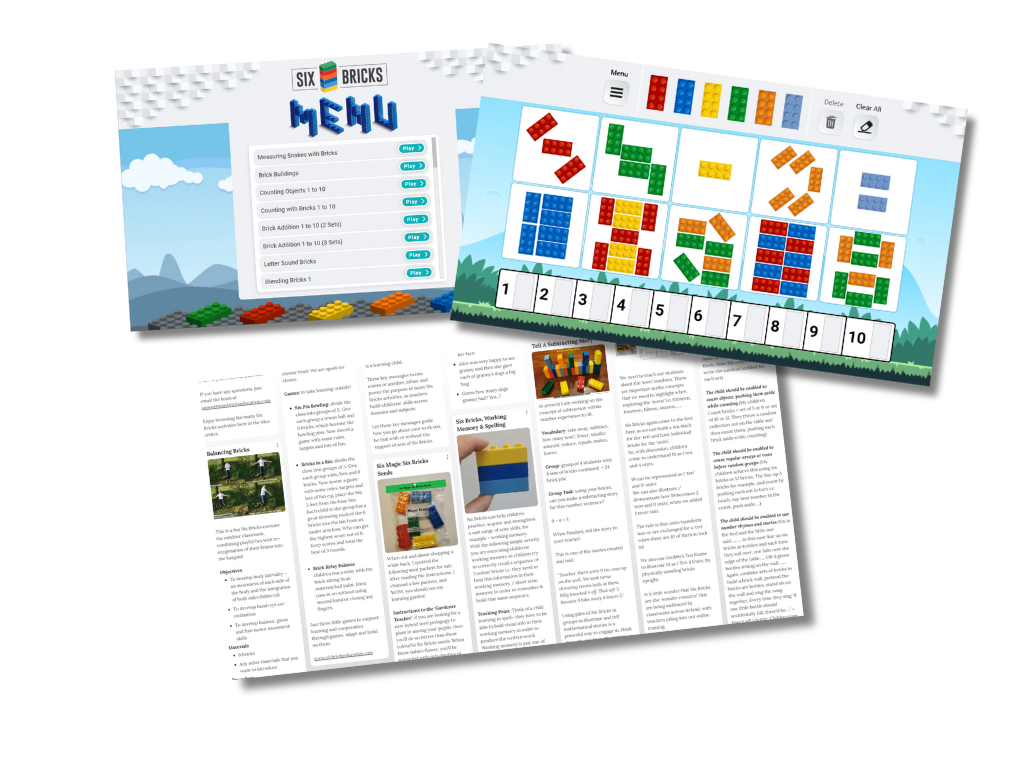A simple to manage resource with boundless activity potential. What’s not to like? Teacher author, Roisin, shares some of the ways she uses one of her favourite practical resource discoveries.
You can find more about the Six Bricks ideas online at https://sixbrickseducation.com/ which is packed with free ideas and a multi-level CPD course for teachers. There is even some free web based ‘Six Bricks’ software to use on your interactive whiteboard!

To try it out, here’s a few easy to implement ideas that you can incorporate into your day or use to add some extra fun to Maths lessons. All you need is some of the common cuboid Lego™ (or Duplo™) bricks with 8 studs in various colours or, if you are lucky enough, you may already have some Six Bricks sets available to you and your school.
Organise sets once and use again and again!
I have found Six Bricks to be a widely useful resource that can be easily differentiated for both junior and senior classes. Younger children can explore concepts as simple as colour distinction and prepositional language or for older classes you can explore trickier concepts such as problem solving or use of non-standard measures. It is also very simple to organise and a ‘kit’ can be kept in a zip lock bag or small plastic food container for a table group to access.
There isn’t always time in every lesson to bring Six Bricks into the equation but for events such as Maths Week, Science Week, etc. it is lovely for the children in the class to be able to rationalize their understanding with a larger variety of resources outside of the usual Dienes, Cuisenaire rods, Numicons, etc.
I have used Six Brick effectively as part of Maths but also found them valuable for exploring story telling in Literacy lessons and for children to use in independent activities at stations. I have also found they work well to provide an easy to administrate, little ‘brain break’ when transitioning from lesson to lesson.
Using Six Bricks
In the Math’s Week type context, you could incorporate them as a playful element to the beginning of your Maths lesson for a problem of a day with each brick representing a different step or operations involved in completing the problem.
In my own class, I plan on using them in Maths Week for problem solving and incorporating STEM with instructions such as:
- ‘Everyone find your green brick. Place the yellow brick on top of the green brick, connecting only two studs’.
- ‘Try different ways to balance the bricks to create a tower without clicking the studs together.’
- ‘Try using just your left hand to horizontally stack all six bricks with connecting just four studs on each brick. Your tower must stand without your support by the end of your last brick!’.
Given that Spooky Season is fast approaching (as is Mid-term, woo!), I plan to use a Halloween Story to incorporate Six Bricks into our class’s Maths Week too.
In the past couple of weeks, I have been working on Time with my class, with our Maths language focus being on first, next, then, after that, etc. I intend to use a Six Bricks Halloween Story which becomes available to download once you have completed the Level 1 and Level 2 courses. However, you could choose to use a Halloween Themed Story you have in your classroom and tailor it to this.
Once the story has been read, I will allow the children to retell the story using this language and their bricks. This could also work as a paired activity in which the children take turns retelling the story to each other.
Loads more ideas online
On the Six Bricks website – https://sixbrickseducation.com, you’ll find a padlet with a vast array of ideas and prompts that you can adapt to suit the variety of needs in your class or for the age group that you teach.
Oh… and do check out the software activities and the Six Bricks teacher community on Facebook.


Leave a Comment